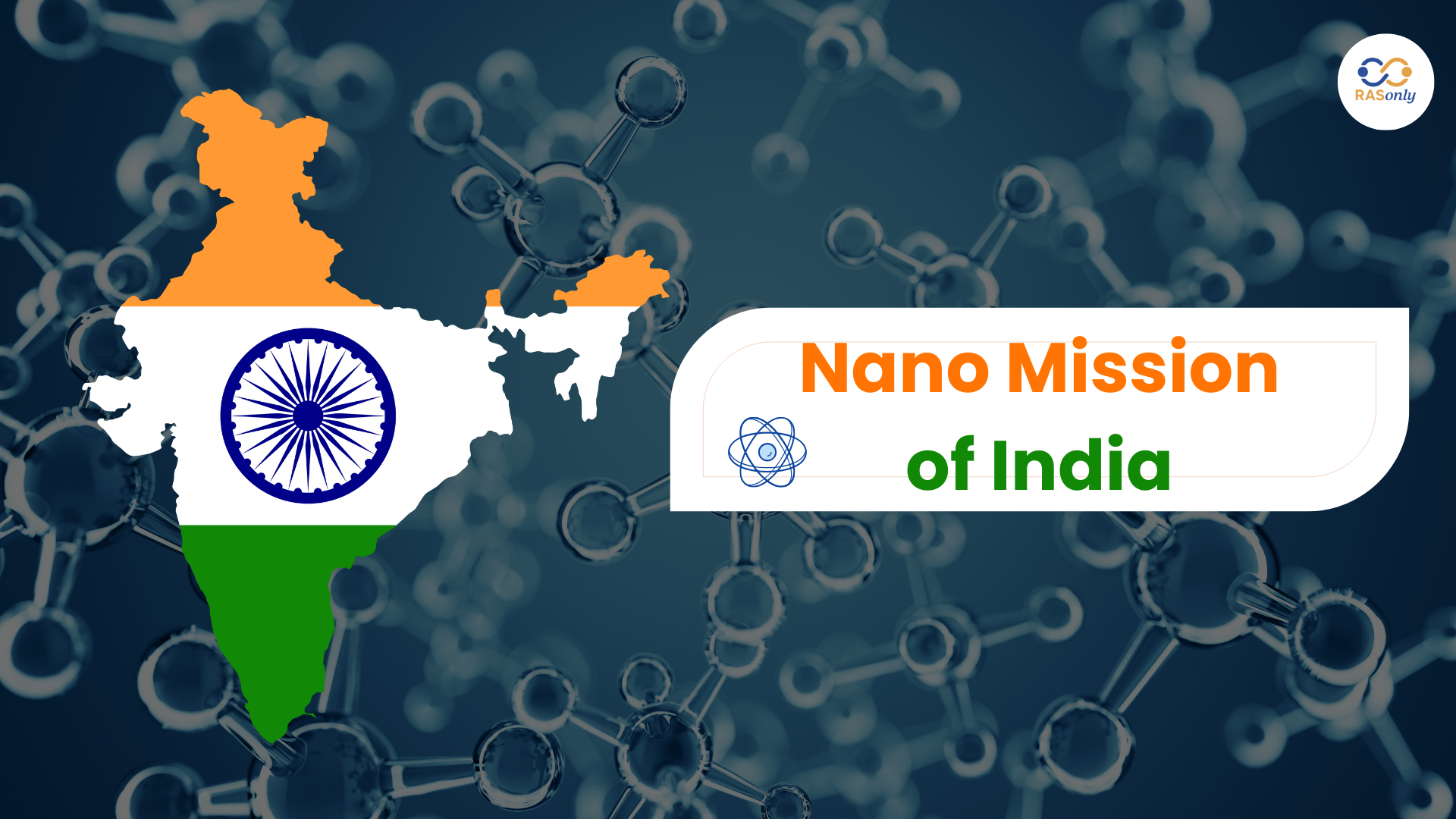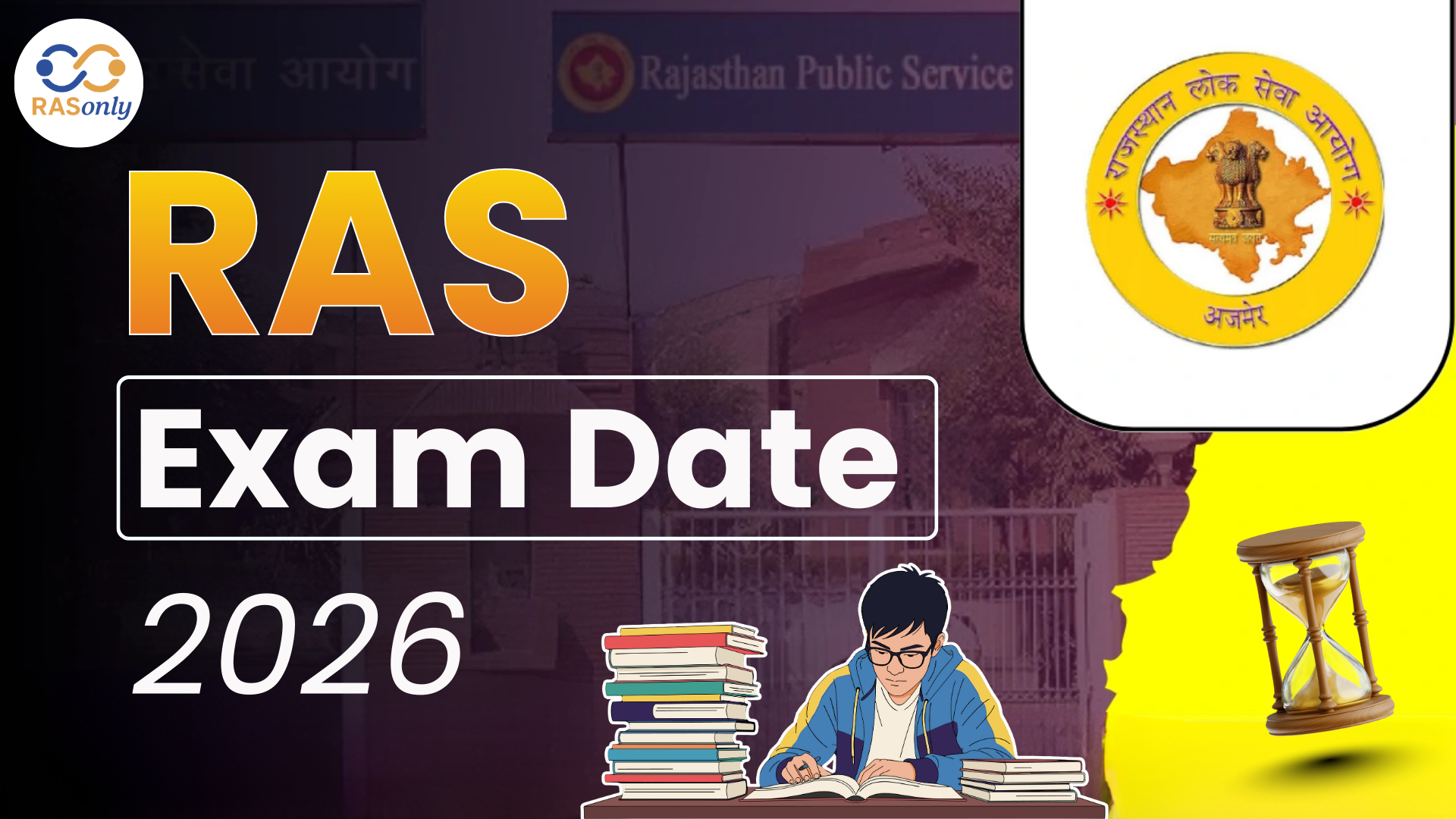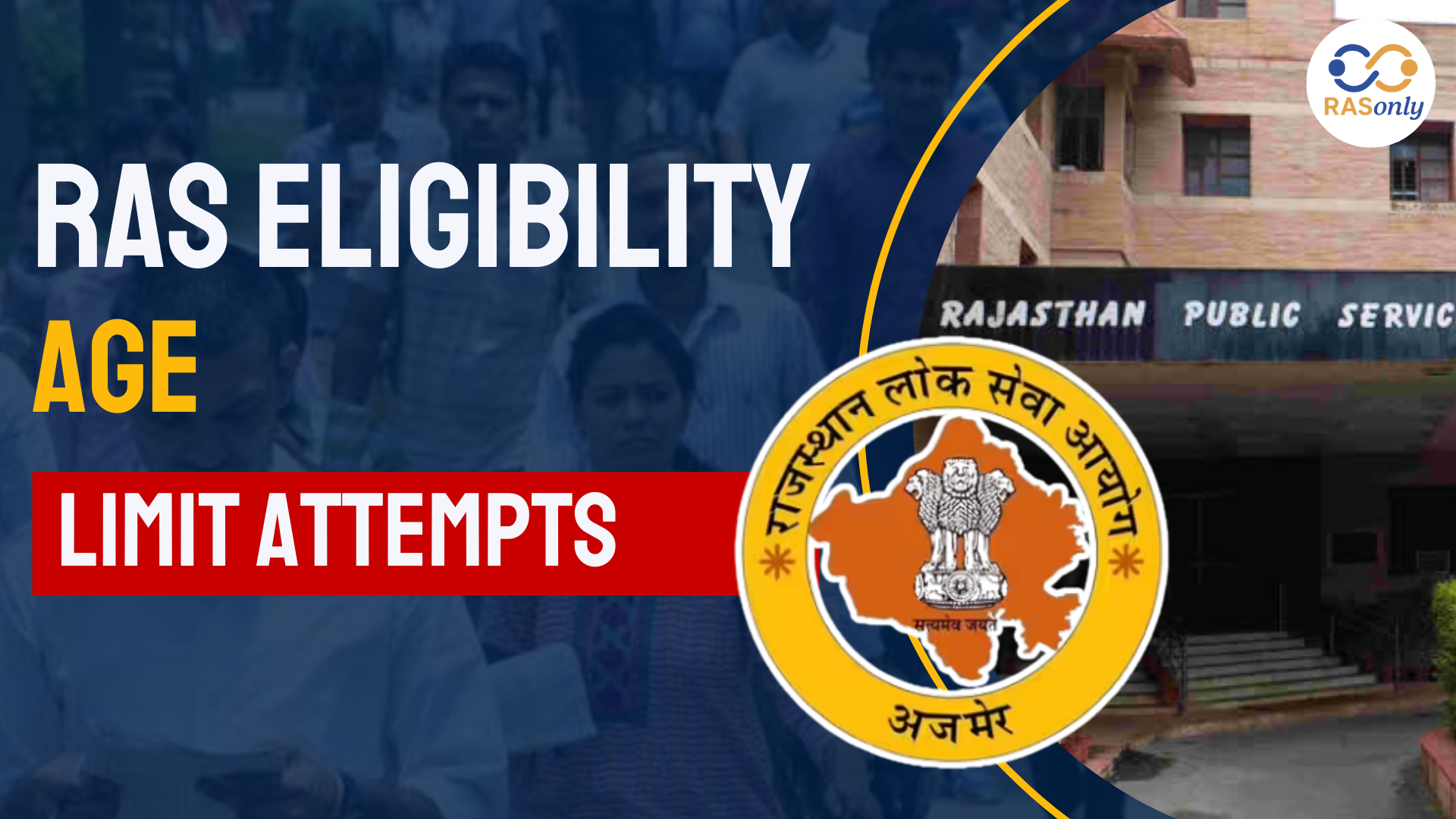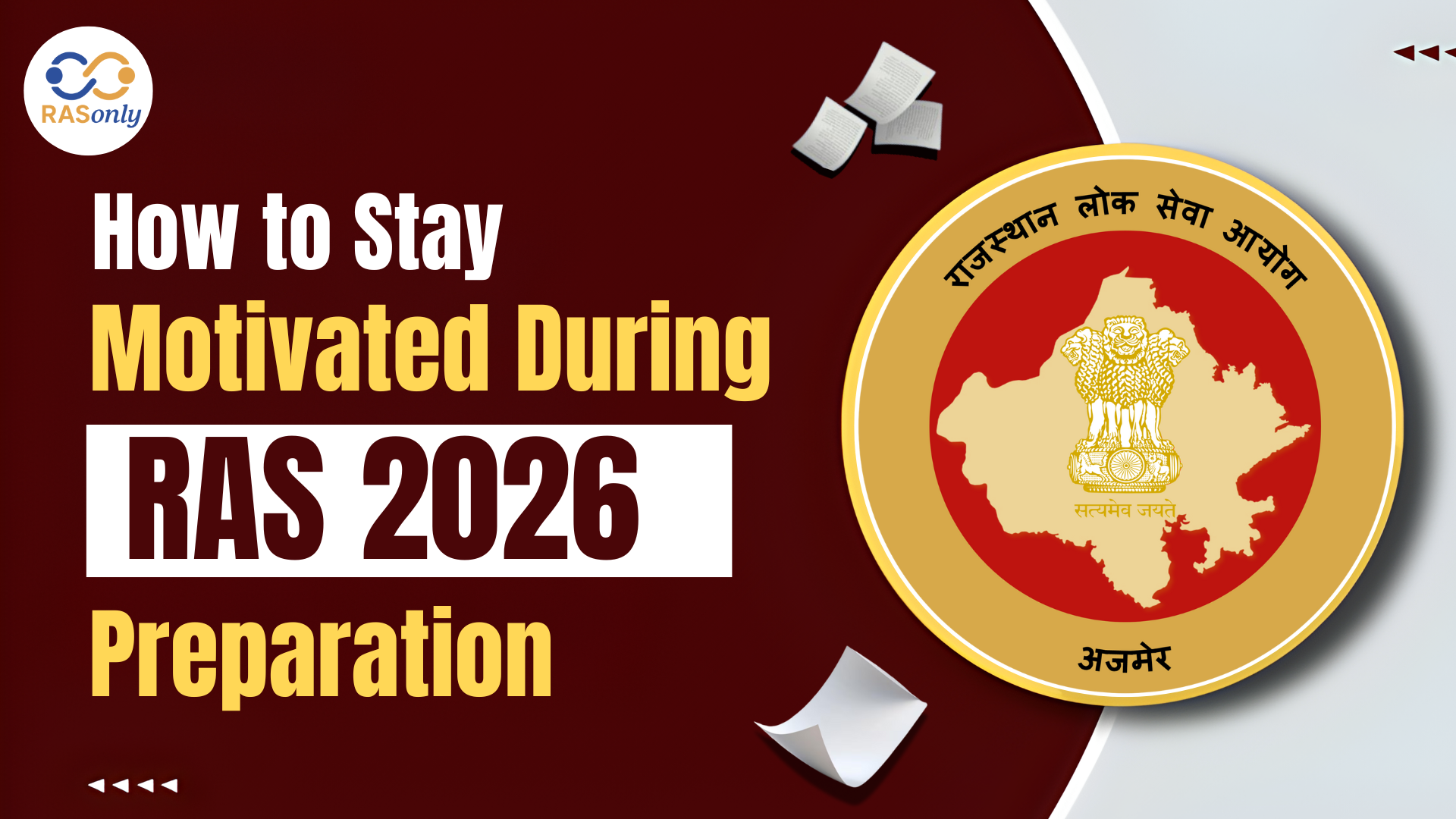RAS Exam Date 2026 for Notification, Prelims, Mains Date
- >
- RAS Preparation Resources
- >
- Nanotechnology in India: Applications, Achievements & Future Roadmap
Nanotechnology in India: Applications, Achievements & Future Roadmap


Nanotechnology entails the manipulation of matters that are of nanoscale (1nm to 100nm) in order to create materials that have properties that are new to the materials. It is commonly used in various fields including medicine, electronics, energy sector, agriculture, water purification and as well as defence. India is developing in nanoscience mainly through the Nano Mission with inputs in healthcare, infrastructure and clean tech where the problem to be resolved is primarily safety issues, regulatory absence, under investments and shortage of skilled human resource. The effective utilization of nanotech is strategic investment and regulation are required to get the best out of this technology in a safe and morally sound way.
Key Points for RAS Mains
What is Nanotechnology?
- Nanotechnology is a physical and biological control and examination of the substances at the nanoscale levels ( 1 to 100 nanometers ).
- The matter nano-sized property has unique physical, chemical, and biological properties that cannot be observed in mass material.
- Allows achieving the creation of light, strong, high-efficient, and multifunctional materials.
What are Nanomaterials?
| Type | Key Properties | Examples | Applications |
|---|---|---|---|
| Inorganic-based | Non-toxic, stable, hydrophobic, biocompatible | Metal/oxide nanoparticles | Catalysis, biomedicine, sensors |
| Organic-based | Biodegradable, non-toxic, biocompatible | Liposomes, dendrimers | Drug delivery, cosmetics, food |
| Carbon-based | Conductive, flexible, low toxicity | Graphene, nanotubes, fullerenes | Electronics, drug delivery, composites |
| Composite-based | High strength, heat/electrical resistance, durability | CNT-polymer hybrids | Sensors, energy storage, coatings |
Special Materials
- Carbon Nanotubes: strong tensile strength, usable conductivity (e.g. electronic capabilities).
- Quantum Dots: Imaging, solar cell, diagnostics applications.
- Graphene: High tensile thin conducting; electronics and medical use.
- Powering up: MXenes are 2D ceramic materials used in energy storage and in medical applications.
- COVID-19 mRNA vaccines: Lipid Nanoparticles.
Applications of Nanotechnology
| Sector | Key Applications |
|---|---|
| Medicine | Targeted drug delivery, diagnostics, cancer therapy, vaccine delivery, tissue repair |
| Electronics & IT | Nano transistors, flexible displays, memory storage, printed electronics |
| Energy | Solar panels, efficient batteries, fuel catalysts, CO₂ capture membranes |
| Environment | Water purification, pollution sensors, nanocatalysts for clean-up |
| Agriculture | Precision farming, pest-resistant coatings, nutrient delivery |
| Manufacturing | Smart fabrics, self-cleaning surfaces, lightweight composites |
| Transportation | Lightweight vehicles, enhanced batteries, nano-infrastructure materials |
Value and Advantages
- Enhance productivity: more power consumption, faster computing, more accurate medical targets.
- Positive environmental impact: Reduction in environmental impact through cleaner production, water filtration, and reduction of CO 2.
- Economic development: New plans, products, and new employment.
- Healthcare revolution: Nanomedicine will provide early diagnosis and individual treatment.
- Sustainability: Contributing to several of the SDGs such as clean water, health and innovation.
Key Achievements
| Area | Notable Examples |
|---|---|
| Medicine | Curcumin nanoformulation, lipid-based drug carriers, Covaxin nanotech platform |
| Electronics | CNT-based transistors (IISc), quantum computing components (IIT Bombay) |
| Clean Water | Tata Swach nanofilter, metal-nanoparticle water purifiers (IIT-M) |
| Defence | Nano-armour, stealth coatings, explosive detectors |
India nanotechnology
- Instantial & Policy Support
- Nano Science and Technology Initiative (NSTI) - It was started in 2001 by DST.
- Nano Mission (2007) A flagship mission under the DST to encourage nanoscience R & D.
- Nanoscience Centres These are being set up in prominent institutes to carry out specialised research.
- NMITLI Programme by CSIR- Tech development and linkages in industrial application.
Nano Mission of India
Overview
- Initiated: In the year 2007 by Government of India in the Department of Science and Technology (DST).
- Allocation of Budget: Ministry of Science and Technology allocated Rs 1000 crores.
Nano Mission objectives
- Marketing of Nanotechnology: Increase nanoscience application and awareness everywhere in the industry.
- Infrastructure Development: Develop cutting-edge facilities on nanotech researches.
- R&D in Applications: foster R&D in nanoscience and technology on the basis of applications.
- Development Centres: institute nanoscience and development centres.
- Human Resource Development: Develop a skilled manpower to pursue education and research fellowships to study nanotechnology.
- International Collaborations: Encourage nanotechnology research and innovation collaboration with other countries.
Achievements and impact
- Global Ranking: India occupies fourth leading position world wide in nanotechnology scientific publications.
- National Dialogues: Organization consultations to support requirements and conditions of nanotech growth.
- Regulatory Roadmap: Nanotech applications should grow safely and in a standardised way, and this can be met by the creation of a national regulatory framework roadmap (NRFR-Nanotech).
Challenges in Nanotechnology in India
| Concern Area | Explanation |
|---|---|
| Health & Toxicology | Nanoparticles can penetrate organs and cause inflammation or organ damage. |
| Environmental Impact | Unknown effects of nano-waste on soil, water, ecosystems. |
| Lack of Regulation | Absence of unified laws on nano safety, toxicity testing, and disposal. |
| Commercial Viability | High production costs; lab-to-market transition remains difficult. |
| Skilled Manpower | Lack of qualified experts in nano-R&D and industry. |
| Information Gaps | Limited risk assessments and impact studies in the Indian context. |
Industrial and Academic Cooperation
- Firms: TCS, Bharat Biotech, Tata Chemicals, and so on.
- Healthcare, clean water, and sensor healthcare start up incubated.
- Cohabitations with USA, Germany, Japan, Israel and UN agencies.
Way Forward
| Measure | Details |
|---|---|
| Funding boost | Support R&D in nanomedicine, sensors, green tech. |
| Skilled workforce | Launch specialized degree & training programs. |
| Regulatory framework | National guidelines for nanoparticle safety, waste, toxicity. |
| PPP Models | Encourage industry-academia R&D partnerships and startups. |
| Infrastructure | Invest in advanced labs, material banks, and nanotech parks. |
| Global Collaborations | Partner with advanced labs abroad for knowledge and technology exchange. |
Conclusion for RPSC
Nanotechnology has a tremendous potential of revolutionizing industries including those in health and agriculture, electronic and clean fuel. In the case of a developing country, such as India it can offer an effective tool to inclusive development and being a competent global country. The way to deploy it safely, ethically, and inclusively is critical, however. India has a great potential to become a leader in responsible nanotechnology with a proper combination of investment, innovation, education and regulation
Post Category
- RAS Salary
- Result
- RAS Admit Card
- RAS Job
- RAS Cutoff
- Preparation Tips
- RAS Answer Key
- RAS Exam Analysis
- RAS Syllabus
- RAS Previous Year Papers
- RPSC RAS Exam Pattern
- RAS Interview
- RAS Mains Exam Date
- RAS Vacancy
- RAS Test Series
- RAS Best Books
- RAS Preparation Resources
- RAS Coaching Centre
- History
- Polity
- Geography
- Economics
- Science
- Art and Culture
- RPSC RAS Application Form
- RPSC RAS Notification
RASonly Interview Guidance Program

Mr. Ashok Jain
Ex-Chief Secretary Govt of Rajasthan
- IAS officer of the 1981 batch, Rajasthan cadre.
- Passionate about mentoring the next generation of RAS officers with real-world insights.
- Got retired in Dec 2017 from the post of Chief Secretary of the state of Rajasthan.

Mr. Guru Charan Rai
Ex-ASP / SP in Jaisalmer
- Guru Charan Rai, IPS (Retd), retired as Inspector General of Police (Security), Rajasthan, Jaipur in 2017.
- Served as ASP and SP in Jaisalmer, Nagaur, Sri Ganganagar, Sawai Madhopur, Dausa, Sikar, and Karauli.
- He also held key positions as DIGP and IGP in the Law and Order division.

Mr. Rakesh Verma
Ex-IAS Officer, B.Tech, MBA, and M.A. (Economics)
- IAS officer of the 1981 batch and retired in Chief Secretary Rank.
- Civil servant of high repute and vast experience.
- Has been teaching UPSC CSE subjects for the last six years.
Related Post
👉🏻 Register Today to Join Classes! 👍🏻
- Team RASOnly -
🎯 Benefits of RASOnly Coaching:
- ✅ 1:1 Mentorship with RAS Officers
- ✅ Experienced and Expert Faculty
- ✅ Free Library Access
- ✅ Daily Minimum 4 Hours Must
- ✅ Comprehensive Study Material
- ✅ Regular Tests & Performance Analysis
- ✅ Personalized Guidance & Doubt Solving
- ✅ Online & Offline Class Options
- ✅ Affordable Fees with Quality Education
Key Highlights:
- 👉🏻 3-Day Refund Policy
- 👉🏻 New Batch Starting from 04 August
- 👉🏻 Registration Amount: Only ₹1000





